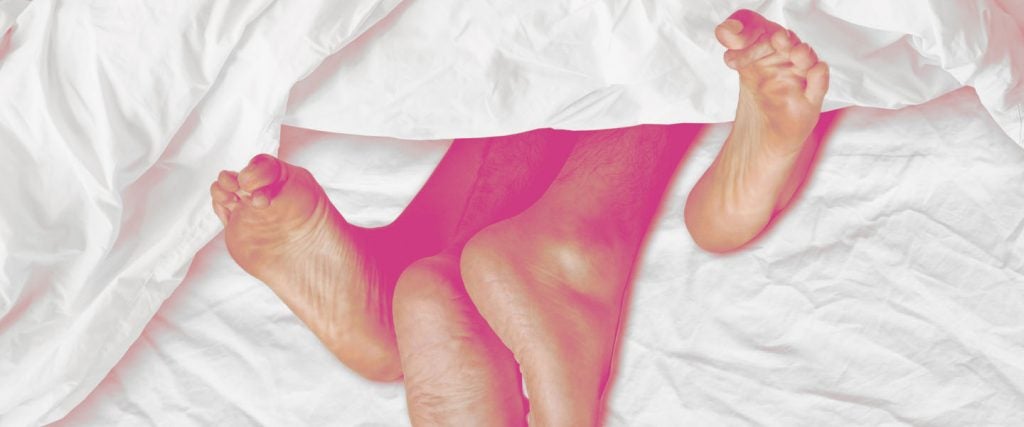Curled toes are basically their own symbol for an orgasm, particularly in movies and TV shows that are too cowardly to give us a better indication of pleasure. More than that, the bodily response has become synonymous not just with an orgasm, but with a really, really, really good one. The general idea is that you’re having such a great time, you can’t maintain control of even your tiniest body parts.
Surprisingly, this is actually more or less scientifically accurate.
Perhaps you’ve noticed, but your body really isn’t yours. It’s constantly doing things without consulting you first — e.g., breathing, digesting food, giving you a headache, etc. Much of this is the passive result of existing, while other things it does involuntarily are the result of specific stimuli. In the latter case, it’s your nervous system that’s responsible. Throughout arousal and sex, our nervous system is essentially being bombarded. All the pleasure we experience is through a complex series of interactions between our brain, nervous system, spinal cord and nerve endings. Our genitals, of course, feature a lot of nerve endings, around 7,000 for the clitoris and penis alone. When these nerve endings are stimulated, both our brain and our nervous system go kind of haywire.
“The body responds to pleasure by tensing up,” explains Victoria Glass, a doctor with the Farr Institute specializing in gynecology. “Your muscles tighten as the orgasm peaks and begin to relax as the orgasm dies down. An orgasm is followed by a sudden rush of dopamine (i.e., the feel-good hormone) and oxytocin (i.e., the wanna-cuddle hormone). This, in combination with the fact that muscles are relaxing after building tension, makes other parts of your body spasm.”
In short, the brain, nervous system and spinal cord decide to respond to all this stimulation by flooding us with hormones, tensing the body up and releasing every bit of that tension and sensation via orgasm. That’s quite literally the purpose of an orgasm — to give our nerves a break from the overwhelming amount of pleasure they’re experiencing. And while it’s nerve endings in the genitals that might be the focus, the brain and nervous system can’t entirely distinguish that from the rest of the body during an orgasm. And so, for many people, even their toes are getting in on the action. As for the “curling” motion itself, it’s really just the toes tensing up along with every other part of the body.
Since having an orgasm is usually something fun that happens in the nude, the side effect might seem more prominent than, say, the full-body tension we experience when we’re startled by something. Orgasms also tend to last for several seconds, giving us more time to notice these things. Notably, the toe-curling thing doesn’t happen for everyone, nor is it specifically an indication of the quality of an orgasm.
In other words, it can definitely mean a job well-done, but contrary to popular belief, maybe not that well-done.

